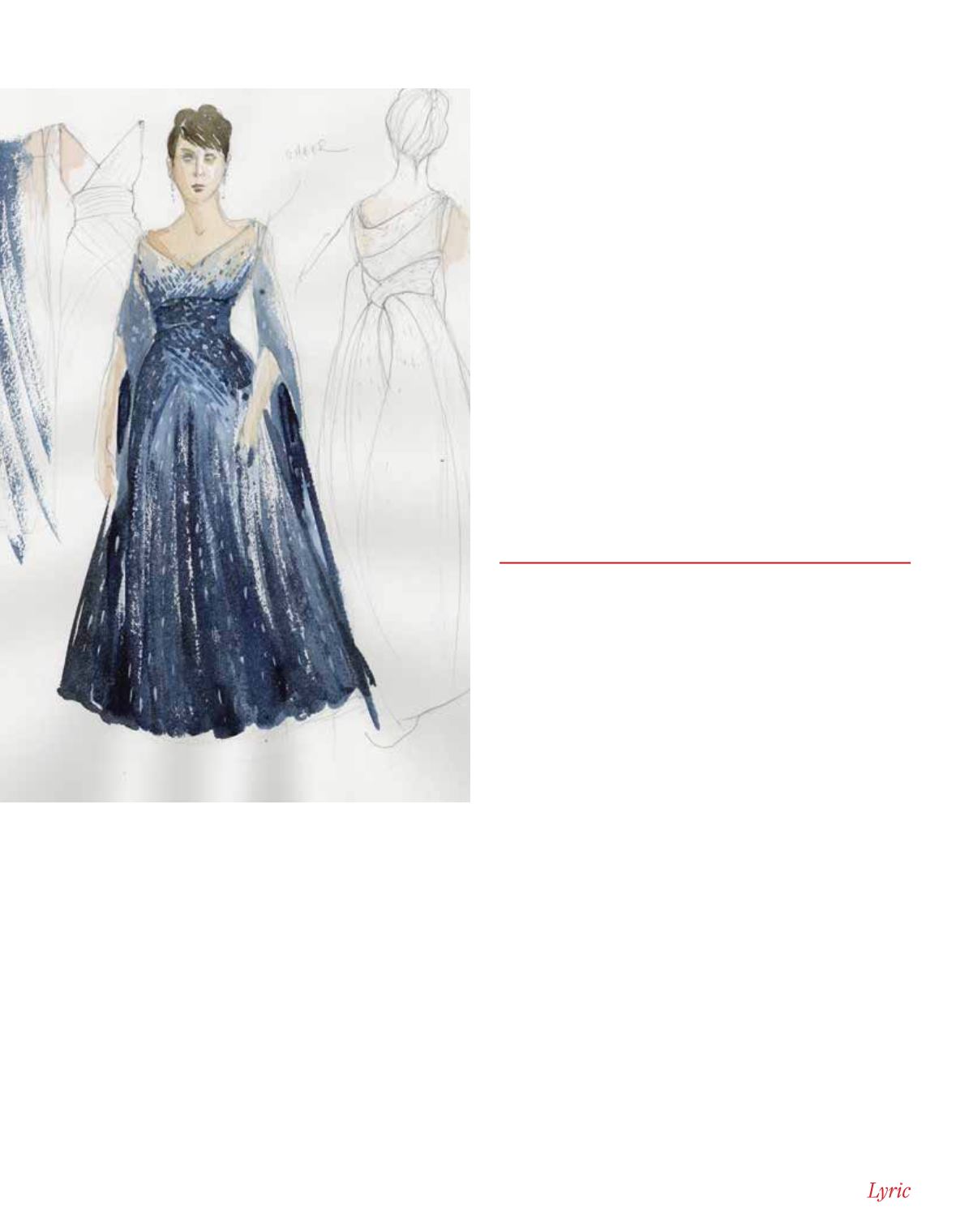

L Y R I C O P E R A O F C H I C A G O
34
|
December 7, 2015 - January 17, 2016
This opera has been an extraordinary act of collaboration.
In the history of opera, I don’t think there’s ever been such an
extensive and close collaboration with the whole creative team –
in this case composer, librettist, conductor, director, and curator.
What sort of work have you done with Jimmy López himself?
I had various suggestions about orchestral texture, because of
some concerns about certain places where balance was crucial.
I offered advice when I thought it was needed, without trying
to influence what Jimmy was doing stylistically – he has a very
strong individual musical personality.
The most important thing we discussed was dramatic tim-
ing. When I was conducting
Billy Budd
at Glyndebourne, Jimmy
came to a performance and I said, “Notice the places where sev-
eral people are singing different texts at once but you understand
what’s going on.” That’s something certain composers don’t
necessarily get; they think the clarity of each line has to be heard,
whereas in fact there are situations onstage that are true to life
where people speak over each other. As a result, Jimmy com-
pletely reworked the whole opening of the opera.
As a conductor, what excites you most about
Bel Canto
?
During the workshop, it was clear that the dramatic tension of the
music stays very high. As the story unfolds, the tension inherent
in the harmonic language is a great strength of Jimmy’s; it doesn’t
let you relax very much until you get to some of the arias, which
makes them doubly effective. In the “dialogue music” that carries
the story forward, there’s a certain angularity in some of the vocal
writing that contrasts with the lyrical moments. I think the way
these moments are spaced throughout the piece works very well
dramatically.
There are two pairs of lovers, with the more serious, intense
music going to Roxane and Hosokawa, and a lighter music for
Carmen and Gen. Renée should take credit for that; when Jimmy
started to work on the opera, she said, “Try to write for the sec-
ondary couple in a lighter style.” That’s another example where
Jimmy was very quick to take a suggestion and use it.
DANIELLE
DE
NIESE,
soprano
What intrigues you about Roxane?
I feel she has not fully accessed herself, even though, as a singer,
she accesses one of the most intimate instruments we know to
convey emotion to others.
How does she respond to what’s going on around her?
She doesn’t get the gravity of what’s happening to her. She still
thinks singing and being famous trumps everything. It’s like she’s
in this “Don’t you know who I am?” mode. “Surely this isn’t
happening! You’re not going to just
keep
me here!” It could be
comical, but it shouldn’t be. She’s simply someone has been liv-
ing in a bit of a bubble and is used to being adored by everybody.
What was most exciting about working on this role in New York
with the creative team?
During those two days I went through my whole part with
Jimmy, Nilo, Renée, Sir Andrew, and Kevin. The most valuable
thing for me was getting into the process very early. I could share
my feelings about the role, ask questions about interpretation. I
could say, “This works,” “That doesn’t work.” It was like a meet-
ing of the minds to be in a room with all that energy and those
thoughts and interpretive contributions, which came from so
many different angles. Renée would say, “Your observation is so
interesting, Danni,” and she had very insightful ideas to make all
the arias work as stand-alone piece. We would say, “Oh, that’s
why you chose that word, Nilo!” and Nilo would say, “Danni,
you interpreted this in a different way from what I imagined!”
Jimmy would share his thoughts on why he chose certain harmo-
nies. Sir Andrew Davis could sing every role – it was stunning
that he knew the opera so well when it was so new.
Gown for Roxane Coss,
designed by Constance Hoffman
















